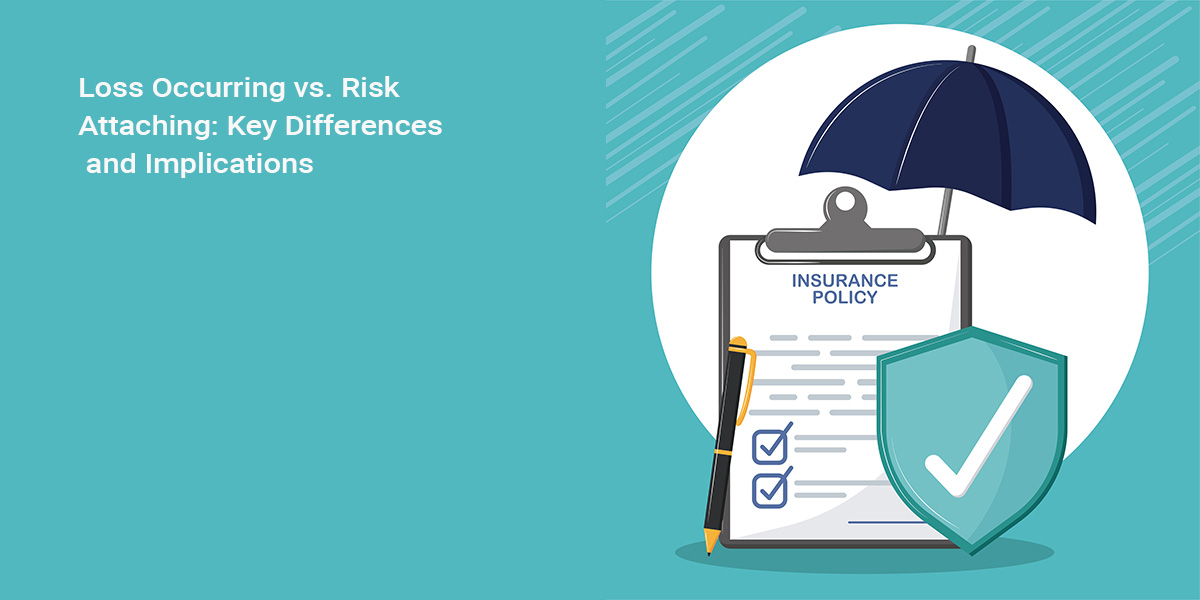Table of Contents
What is reinsurance?
Reinsurance is a complex financial arrangement that plays a fundamental role in the global insurance industry. At its core, reinsurance is a mechanism through which insurance companies transfer a portion of their own risks and liabilities to other insurance companies, known as reinsurers. In other words, it’s insurance for insurers. The primary purpose of reinsurance is to help insurance companies manage their exposure to large and unexpected losses, such as those caused by natural disasters, catastrophic events, or an unusually high number of claims. By ceding some of their risks to reinsurers, insurance companies can maintain their financial stability, ensure they have the capital to pay policyholders’ claims, and continue to underwrite new policies. Reinsurance comes in various forms and structures, allowing insurers to tailor their risk management strategies to their specific needs.
Reinsurance is a global industry, and reinsurers can operate on a regional, national, or international scale. They assess and price the risks they assume from ceding companies, and in return, they receive premiums, sharing in the financial burden of claims payouts. The relationship between an insurer and its reinsurer is a critical aspect of the insurance ecosystem, contributing to the industry’s stability and capacity to provide coverage to policyholders.
Loss Occurring Vs Risk Attaching Reinsurance
Loss Occurring and Risk Attaching Reinsurance are two distinct and fundamental concepts in the insurance and reinsurance industry. These terms represent critical distinctions in the timing, coverage, and purpose of reinsurance agreements. Understanding the differences between them is essential for insurance professionals and organizations seeking to manage and mitigate risks effectively while maintaining financial stability. In this exploration, we’ll delve into the nuances of Loss Occurring and Risk Attaching reinsurance to shed light on their unique roles and implications in the world of risk management.
Loss Occurring Reinsurance: In Loss Occurring reinsurance, the reinsurer takes on the responsibility for covering claims that arise from events that have already occurred before the reinsurance agreement takes effect. This means that the ceding company transfers the risk associated with specific claims that have already been reported or losses that have already happened. Loss Occurring reinsurance is typically used for known or incurred but not reported (IBNR) claims, helping insurance companies manage their existing liabilities and free up capital for other purposes. It is retroactive in nature and can be essential for addressing past liabilities.
Risk Attaching Reinsurance: Risk Attaching reinsurance, on the other hand, covers claims arising from events that occur after the reinsurance agreement’s effective date. It is forward-looking and anticipates future risks and losses. The reinsurer assumes the risk associated with future claims, providing the ceding company with additional capacity to underwrite new policies and expand its business. Risk Attaching reinsurance is essential for insurers to maintain their ability to underwrite policies with confidence, knowing that they have a financial backstop in place to handle future losses. It is particularly valuable in situations where insurers anticipate a surge in claims due to a specific event or a change in market conditions.
Key Differences between Loss Occurring and Risk Attaching
Understanding the nuances between Loss Occurring and Risk Attaching Reinsurance is essential for insurance professionals. These two distinct types of reinsurance agreements differ in their scope, timing, and purpose. In this exploration, we delve into the pivotal distinctions that define their roles in risk management and financial stability within the insurance industry.
Loss Occurring Vs Risk Attaching Reinsurance: Definition
- Loss Occurring Reinsurance: Loss occurring reinsurance covers claims resulting from events that have already happened before the reinsurance agreement takes effect. It deals with past liabilities, including known and incurred but not reported (IBNR) claims.
- Risk Attaching Reinsurance: Risk attaching reinsurance covers claims arising from events that occur after the reinsurance agreement’s effective date. It is forward-looking and anticipates future risks and losses.
Loss Occurring Vs Risk Attaching Reinsurance: Timing
- Loss Occurring Reinsurance: Addresses claims associated with past events, providing financial support for existing liabilities.
- Risk Attaching Reinsurance: Provides coverage for future claims, allowing insurers to underwrite new policies confidently.
Loss Occurring Vs Risk Attaching Reinsurance: Relevance
- Loss Occurring Reinsurance: Relevant for managing existing and historical liabilities, especially when insurers need to address known claims or IBNR estimates.
- Risk Attaching Reinsurance: Relevant for maintaining underwriting capacity and managing potential future risks, ensuring insurers can continue to write new business.
Loss Occurring Vs Risk Attaching Reinsurance: Insurance Coverage
- Loss Occurring Reinsurance: Covers claims for specific events or losses that have already occurred.
- Risk Attaching Reinsurance: Covers claims for future, yet-to-occur events and losses.
Loss Occurring Vs Risk Attaching Reinsurance: Purpose
- Loss Occurring Reinsurance: Helps insurers address past and existing liabilities, managing their financial exposure to historical claims.
- Risk Attaching Reinsurance: Allows insurers to confidently underwrite policies and expand their business without the fear of unforeseen future losses.
Loss Occurring Vs Risk Attaching Reinsurance: Examples
- Loss Occurring Reinsurance Example: A reinsurance agreement is made to cover the costs of known medical claims that have occurred but not yet been paid by the primary insurer.
- Risk Attaching Reinsurance Example: An insurance company secures a risk attaching reinsurance policy to protect against future losses from a series of hurricanes during the upcoming hurricane season.
Implications for Risk Management
In the ever-evolving landscape of risk management, understanding the implications of different strategies and approaches is paramount. This section explores the far-reaching consequences and strategies associated with effective risk management, offering insights into how organizations can safeguard their assets, reputation, and bottom line. Let’s delve into the multifaceted world of risk management and uncover the strategies that can help organizations thrive in the face of uncertainty.
1. Financial Stability: Sound risk management safeguards an organization’s financial health by minimizing unexpected losses. It helps allocate resources wisely and provides a safety net for adverse events.
2. Regulatory Compliance: Compliance with industry-specific regulations and standards is crucial. Effective risk management ensures that an organization meets legal requirements, avoiding penalties and reputational damage.
3. Enhanced Decision-Making: Risk assessments provide valuable data for decision-making. Understanding potential risks allows leaders to make informed choices and seize opportunities.
4. Improved Resilience: Risk management enhances an organization’s resilience in the face of crises, such as natural disasters, economic downturns, or cybersecurity breaches.
5. Reputation Protection: Managing risks associated with reputation, such as public relations crises, ensures that an organization maintains a positive image in the eyes of stakeholders.
6. Cost Reduction: Effective risk management reduces the financial impact of adverse events, minimizing expenses related to recovery, legal actions, or fines.
7. Strategic Growth: Mitigating risks associated with expansion or diversification enables organizations to pursue growth opportunities confidently.
8. Talent Attraction and Retention: Employees value organizations that prioritize their well-being. Effective risk management includes safety measures, fostering a safer workplace.
9. Insurance Premium Reduction: Demonstrating a commitment to risk management can lead to lower insurance premiums, reducing operational costs.
10. Stakeholder Trust: Stakeholders, including customers and investors, trust organizations that manage risks effectively. This trust can lead to stronger partnerships and increased loyalty.
11. Competitive Advantage: Organizations that proactively manage risks gain a competitive edge. They are better prepared to navigate challenges and capitalize on opportunities.
12. Long-Term Sustainability: Sustainable practices, including risk management, ensure an organization’s longevity in a dynamic business environment.
13. Business Continuity: Risk management plans, such as disaster recovery and contingency strategies, help maintain operations during disruptions.
14. Ethical Responsibility: Ethical risk management ensures that organizations operate responsibly and with integrity, aligning with societal values.
15. Innovation Facilitation: Effective risk management encourages innovation by reducing the fear of failure, allowing for experimentation and growth.
In conclusion, risk management is not merely a precautionary measure but a strategic imperative. Embracing these implications enables organizations to thrive in an ever-changing world.
Conclusion
In the realm of reinsurance, understanding the key distinctions between Loss Occurring and Risk Attaching is crucial. These differences go beyond semantics, shaping the very nature of risk management in the insurance industry. The implications are far-reaching, affecting everything from financial stability to strategic planning.
To navigate this complex terrain effectively, it’s essential to have expert guidance. If you need further insights or assistance in navigating the intricacies of reinsurance, don’t hesitate to get in touch with L&G experts. Our seasoned professionals are here to provide the expertise and support you need to make informed decisions and optimize your risk management strategies.




